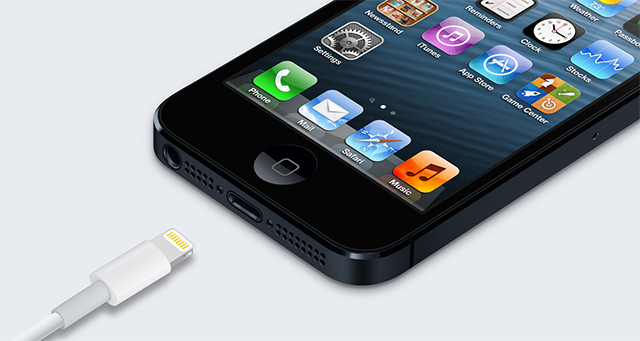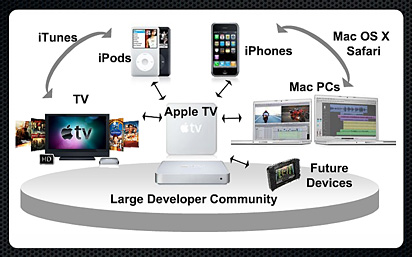Apple’s Exclusivity: Help Or Hindrance? [Editorial]
The All-new Lightning connector. Smaller. Smarter. Durable. Reversible. Tool of Monopolization. Wait… what?
That last attribute isn’t strictly alluded to by Apple on its website, but trust me, it’s still important. With the iPhone 5 came the new and improved Lightning connector, a new method of data and power transfer that means the iPhone 5′s form factor can be significantly smaller than its predecessors.
The development caused much controversy at the time, because as you well know, the reformed dock isn’t directly compatible with 30-pin accessories, such as speaker docks. With the iPhone 5′s release, all accessories that once required a connection with the iPhone made before September 21 were rendered completely useless. To combat this, Apple released its adapter series.
Apple’s series of adapters aren’t cheap, naturally. The “cable-less” adapter retails at $29, for that you get this piece of kit, one end in the accessory, one end in the iPhone. Simple.
If you’d like this adapter with a 0.2m cable, it’s an extra 10 bucks.
These two adapters are the most important because it’s these adapters that make your iPhone 5 compatible with your old, 30-pin accessories. Now for some complaining.
It’s recently been reported that the Lightning connector features an authentication chip, which means that the iPhone 5 will only work with cables that have been made by Apple. Yes, some companies claim to have “cracked” this chip, but their reproductions are more expensive than Apple’s version.
What does this mean? If you want the adapter, you have to buy it from Apple. And boy are they selling, of the 5 top selling iPhone accessories on Apple’s webiste, 3 of them have the name “Lightning” in their title.
Now for some maths, Apple has definitely sold 5 million iPhones. Let’s hypothetically imagine that, being reasonably enthusiastic about their tech, three quarters of those customers are repeat customers, who own an accessory based on the 30-pin dock.
Naturally, they want to keep using these accessories. Therefore they buy an adapter for $29. Apple has just bagged itself $108 million in revenue. Obviously, there are production costs to deduct.
But the bottom line is this, Apple has made an absolute fortune by reconfiguring the 30-pin adaptor. Furthermore, Apple has also updated its “Made for iPhone” (MFi) policies, essentially, only manufacturers that have had their facilities approved by Apple will be allowed to produce iPhone 5 accessories.
What I’m trying to suggest is that it’s very easy to look at Apple’s actions of late and deduce that they are tightening their grip on the market. Distilling the options from which users may choose if they want to buy Apple products, narrowing the playing field and eliminating the competition. The Lightning adapter is one instance, but it isn’t an isolated occurence.
The Apple Mac began life as a device running proprietary software on proprietary hardware, but soon it began to adopt PC standards like USB, until there wasn’t too much to differentiate between a Mac and a PC. One can still technically port the Mac OS onto a PC system and run Mac apps. But now Apple are beginning to move away from the standards of the industry, back into its own little world.
They use fewer standard components and chips, and far fewer industry standard software technologies. For example, the iPhone and the iPad don’t support Adobe Flash or Silverlight, making it very difficult for users to view a significant amount of online content. For many, Apple’s decision to avoid affiliation with different technology solutions is a major turn off.
In another case, if you want an app on your iPhone or iPad, then you go to the App store, on an Android device, you can load software onto your phone from multiple sources. By ensuring all software is sold through Apple, the boys at Cupertino can get themselves a cheeky cut, 30% in fact.
In turn, the consumer has to pay more to make app developing profitable. A closed system means that if you are producing excellent hardware and software, capable of running well developed apps without security threats, then you can charge more for it.
And that’s where the counter-argument takes hold. Yes, Apple may well have monopolized the iPhone 5 accessory market, yes, their hardware is expensive, and yes, its software is exclusive, but it can be, because these are good products.
With a closed system, Apple can ensure that it’s customers are receiving the best possible user experience, and the best possible service, with the fewest number of hiccups and the least hassle. Apple’s proprietary attitude has helped create a seamless ecosystem that is reliable and functional on every level… but you’ll have to pay through the nose to become part of it.
Apple’s exclusivity comes at a price to you and I, but many would argue that the price is worth paying.


